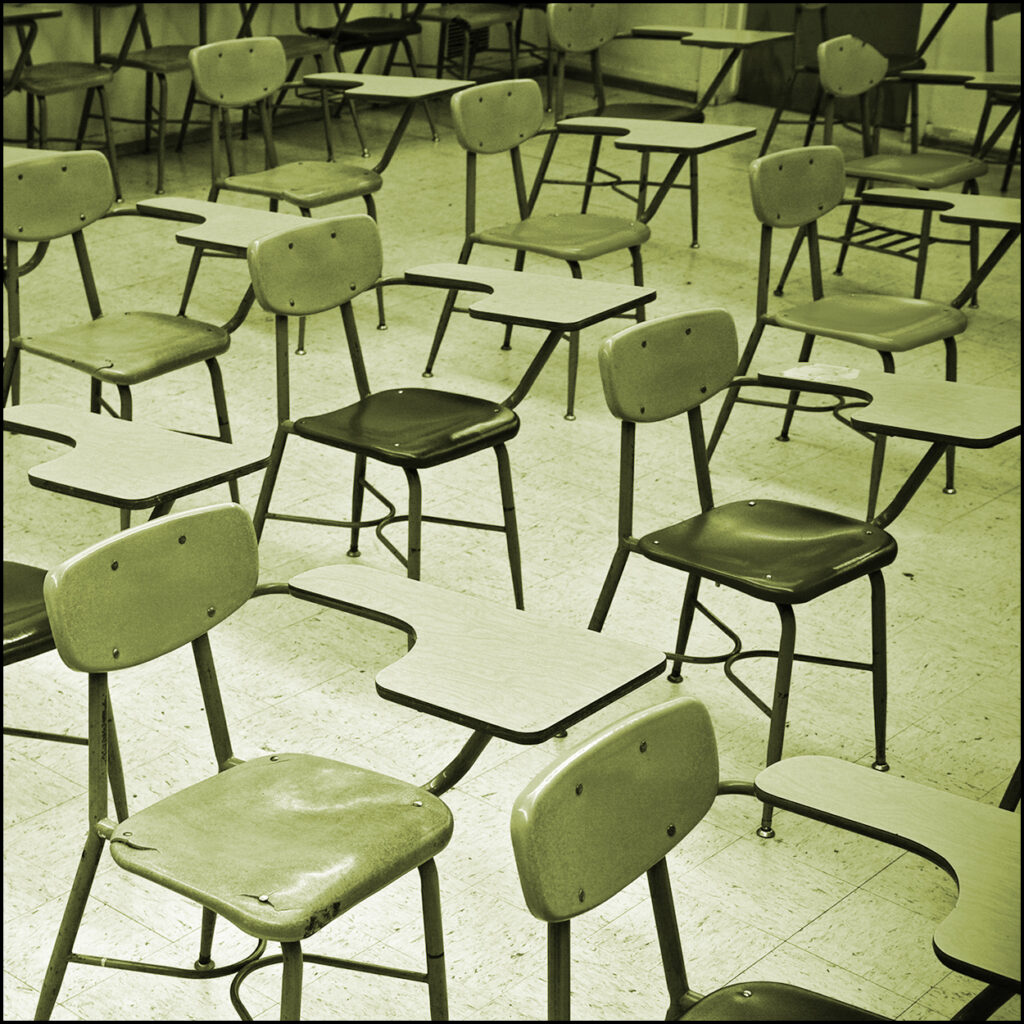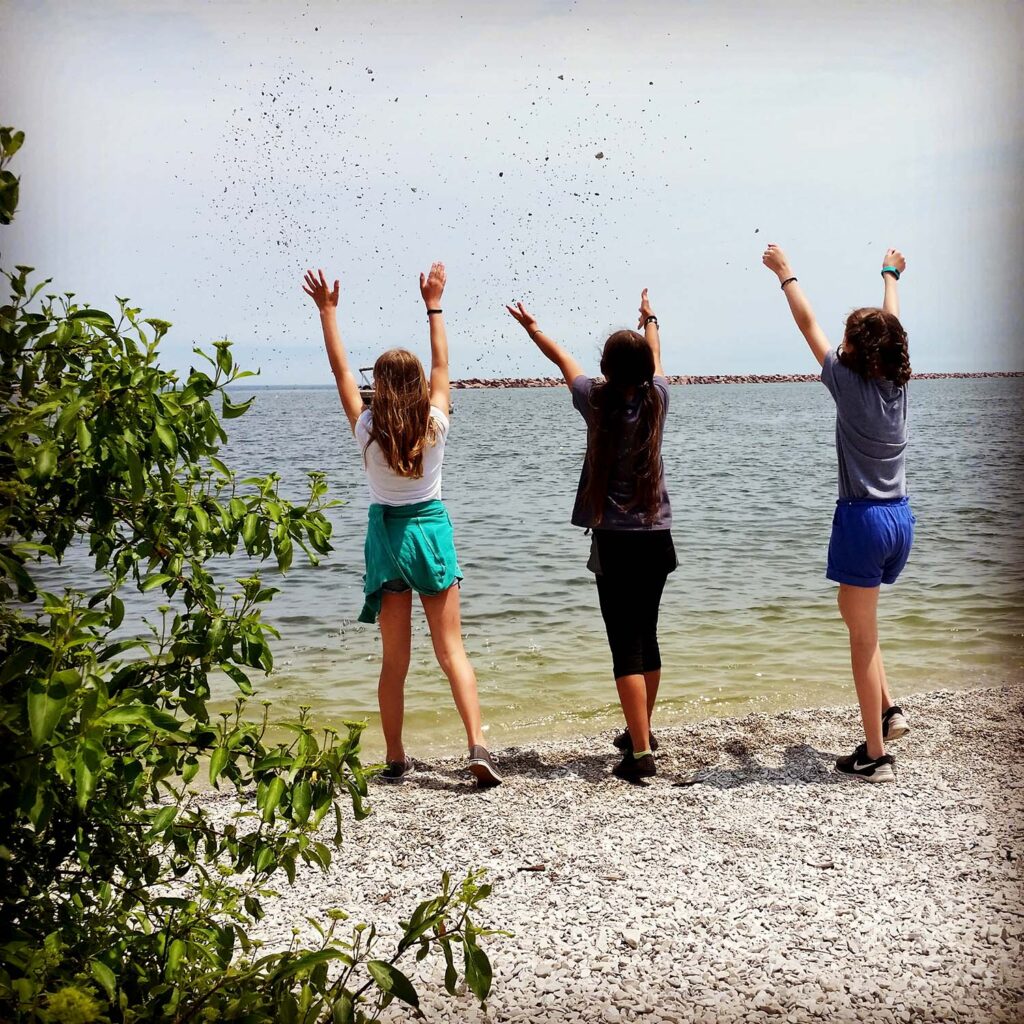Discover Milwaukee’s Local History
Emerald Necklace
Last week I talked about outdoor learning I briefly discussed benefits and connections we can easily make to our learning curriculums. Milwaukee is a great city for a walk in the park and an even better place for outdoor learning! Learning outside adds a dimension of enrichment that can’t be taught within the walls of the classroom.
The connection easiest made to outdoor learning, in my opinion, is to our history. Specifically, local history. Milwaukee’s a great place for a walk in the park! A simple place to start is by choosing from the over 150 parks comprising our county’s emerald necklace to focus on. The emerald necklace is the term used to describe our city’s extensive public park and parkway system.
Spending Time with Nature
New research shows walking and talking enhances our mental creativity. Although modern science is only beginning to catch on, this secret was known long ago. Many well-known philosophers are famous for walking while working outdoors. Plato’s school was outside, in a grove of trees called Akadēmía. Socrates was known to stroll and philosophize. Aristotle taught his classes while he walked up and down the walkways of the Lyceum.
The Stoics walked and talked on outdoor porches filled with beautiful artwork. The Roman Stoic Seneca told his followers, “We should take wandering outdoor walks so that the mind might be nourished and refreshed by the open air and deep breathing.”
The brain is always active. Even when standing motionless and doing what we think is nothing, our brain is hard at work. While standing still, billions of neurons in our mind are firing. It therefore stands to reason much more is happening to our bodies and our brains when we walk.
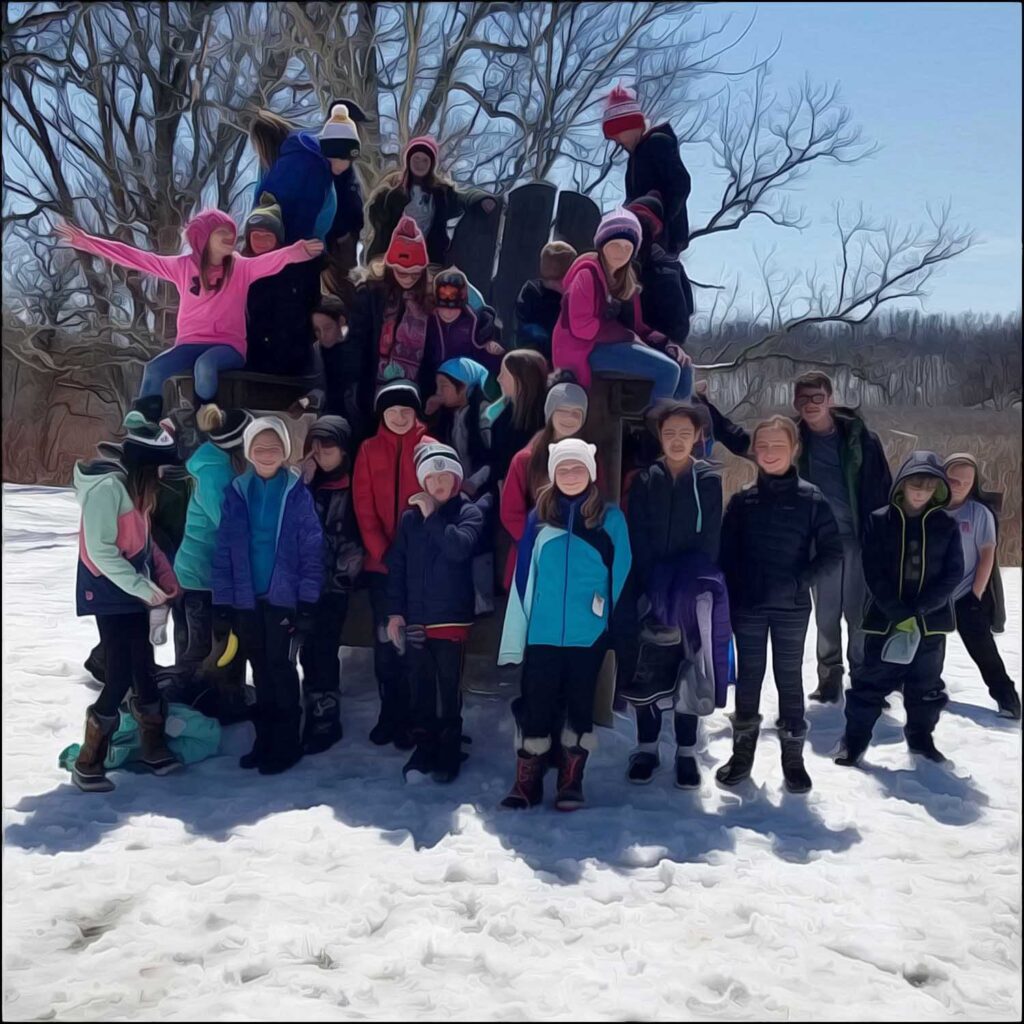
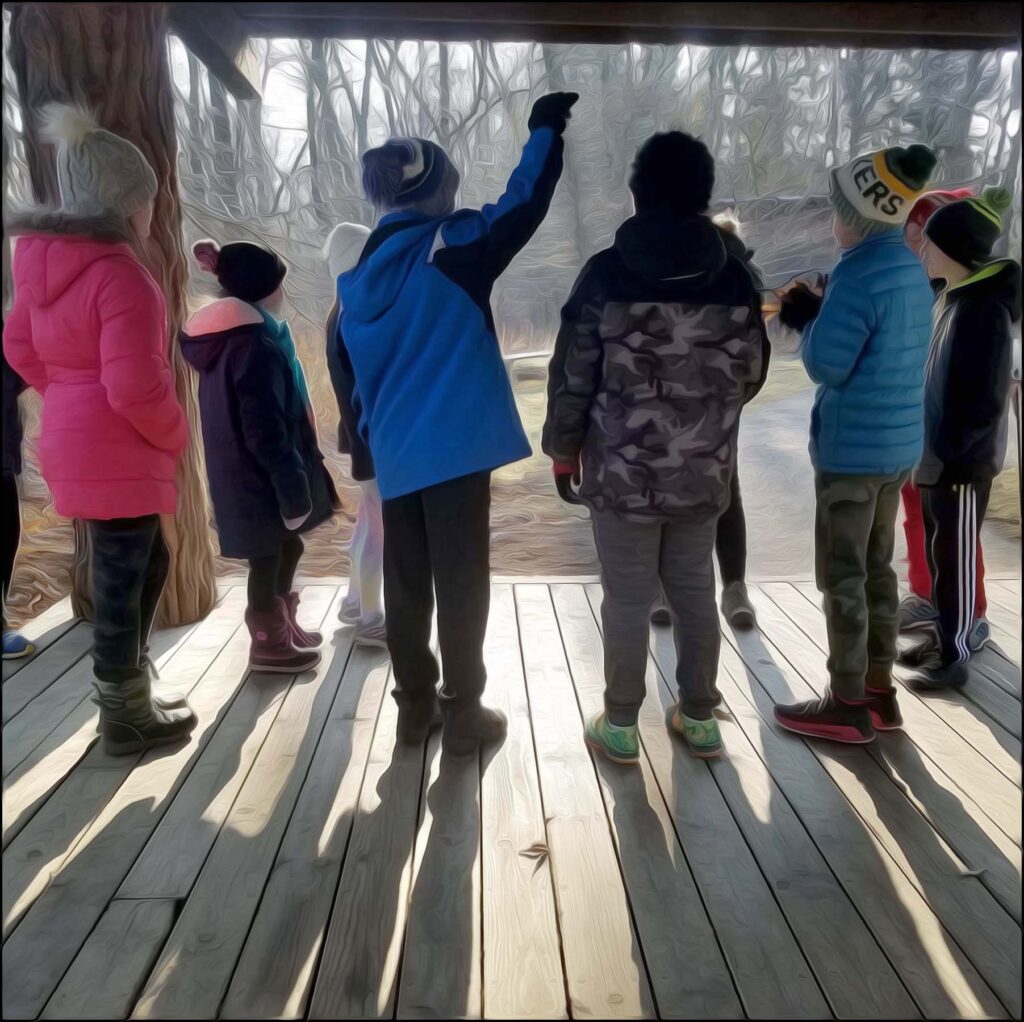
Walking with nature has always been an obvious way to connect local history to our surroundings. The history of the city is rich with stories to be shared along the way. Students are encouraged to explore both the organic and manmade materials within their environment.
Milwaukee’s extensive history chronicles cultural connections from all over the world: From the First Nations who followed wild rice and game along the local marshy riverbanks; to the French fur-traders who arrived by boat along the Great Lakes, establishing both a port and trading post; to the Polish, Irish, Black, Italian, German, Latino, and Hmong immigrants –among others – who over centuries migrated to Milwaukee for a variety of respective reasons.
What is the Emerald Necklace?
Milwaukee’s a great place for a walk in the park. It’s an even better place for outdoor learning! Our city’s many public parks were developed within its historical, social, and political roots. Their placement and design can be traced back to the evolution of Milwaukee as an industrial city.
Once known as the “Machine Shop of the World,” a large number of mostly ethnic workers labored in Milwaukee factories. The city’s brewing industry formed and rapidly grew beginning in the early 1840s. European immigrants brought both a local market for their traditional beers and the skills to produce them.
Although German brewers are best historically known, a team of Welsh immigrants established the city’s first brewery in 1840 near the North Pier of Lake Michigan. It was known as the Milwaukee Brewery, then later the Lake Brewery. Herman Reutelschöfer soon established Milwaukee’s first German brewery on the northwest corner of Hanover and Virginia Street.
Early Milwaukee’s fickle brewing business saw the establishment of approximately thirty-five breweries between 1840 and 1860. German factory workers, in particular, had a distinct craving for urban leisure. Milwaukee beer barons began showing interest in creating German style outdoor environments for their workers to drink their beer in. The first Biergartens marked the beginning of a public park system which would eventually put most others to shame.
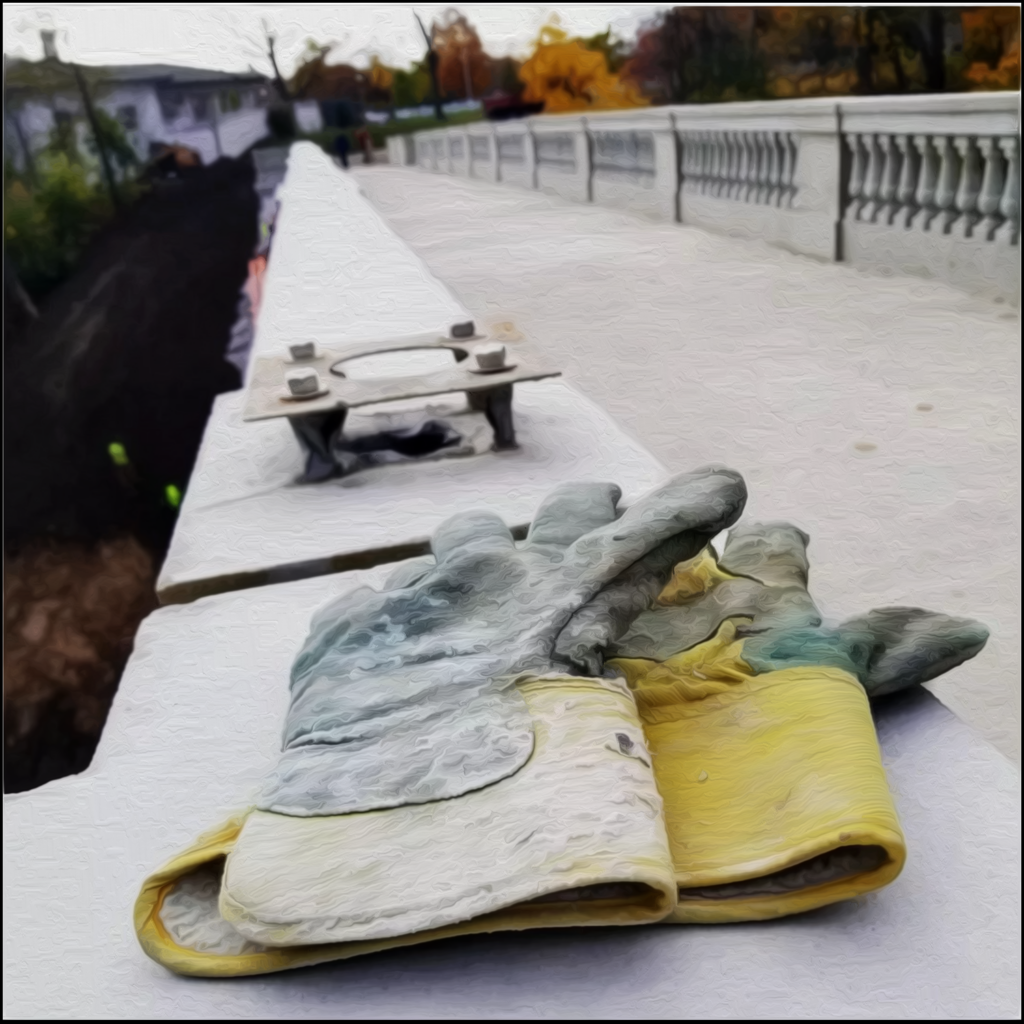
Seeing the success of the beer gardens, the political will for outdoor greenspace promptly grew. Leaders believed neighborhood density and industrial development was taking a toll on the metal health of its citizens. But, in the mid to late 1800s, parks around Milwaukee were held on private ground. Often, citizens were charged a fee for access to enter. Even if the fee was small, it still restricted park usage for a segment of Milwaukee families.
To address this need, the city formed the Milwaukee Parks Commission in 1889. They were tasked to purchase and cultivate land for public parks. In addition to the lack of greenspace around the county, local politicians voiced concern over the difficulty citizens had in accessing Lake Michigan in particular.
Being in such close proximity to Chicago became Milwaukee’s lucky break. Known for New York City’s Central Park, Architect Frederick Law Olmsted was in Chicago, working on the World’s Columbian Exposition of 1893. He made himself available to help Milwaukee plan and design some of its earliest parks. The commission hired Olmsted’s firm to first develop two of the five original county grounds: Lake Park and River (now Riverside) Park.
Later his firm was asked to also design West (now Washington) Park. In addition to the parks, Olmsted designed Newberry Boulevard, the grand entrance to Lake Park. Completed in 1896, early park plans had hoped to eventually include majestic boulevards as entryways to all the major parks. Unfortunately, this park feature has not yet come to fruition.
Milwaukee’s Lake Park
Before Olmsted, work had already begun on Lake Park, located on land with a history stretching back to antiquity. Its natural features and typography made this location a perfect choice, noticed for its magnificent splendor. The next couple decades experienced major renovations. Milwaukee’s Lake Park began to take the form of an Olmsted landscape.
Five Lake Park Bridges
Lake Park is best known for its five bridges. The stretch of land along the northern bluff was given a long, winding path amidst pastoral meadows and woodlands. Four out of five of the decorative bridges soon traversed six natural ravines. Local engineer Oscar Sanne has been credited in designing them. His bridges enhanced the natural beauty of the landscape. One of the ravines was soon filled in to create a green meadow. The meadow became a six-hole golf course in 1903. It was then expanded in 1930.
The legendary “Lion Bridges” standing tall and proud, guarding the North Point Lighthouse, were completed by 1897. The fifth bridge, known as the “Lake Park Bridge” ascends over the Locust Street Ravine. Originally constructed in 1905, the bridge design has been credited to Alfred C. Clas.
Son of a German immigrant, Alfred’s firm, Ferry and Clas, gained distinction for its work in the 1893 World’s Fair held in Chicago. Clas also served as one of Milwaukee’s park commissioners. In 2014, the meandering Ravine Road beneath the bridge was closed when significant structural issues were noticed. The restored bridge reopened in the fall of 2022.

Originally, I had thought this might be the bridge the 32,000 lb. semi-truck had gotten wedged into in 2014. However, this is not the case. Hauling a 53-foot trailer, the truck got lodged behind the North Point Lighthouse along Milwaukee’s lakeshore. The driver’ GPS misadventure damaged multiple trees in addition to concrete railings on the two pedestrian lion bridges. Apparently, he claimed he didn’t see anything out of the ordinary in the route he had chosen.
The Grand Staircase & Pavilion
If you were to start on Lincoln Memorial Drive at the Oak Leaf Trail marker near the bottom of the Locust Street Ravine, you could climb up the Ravine Trail and cross the Lake Park Bridge. The bridge is located just next to the park pavilion and the park’s Grand Staircase.
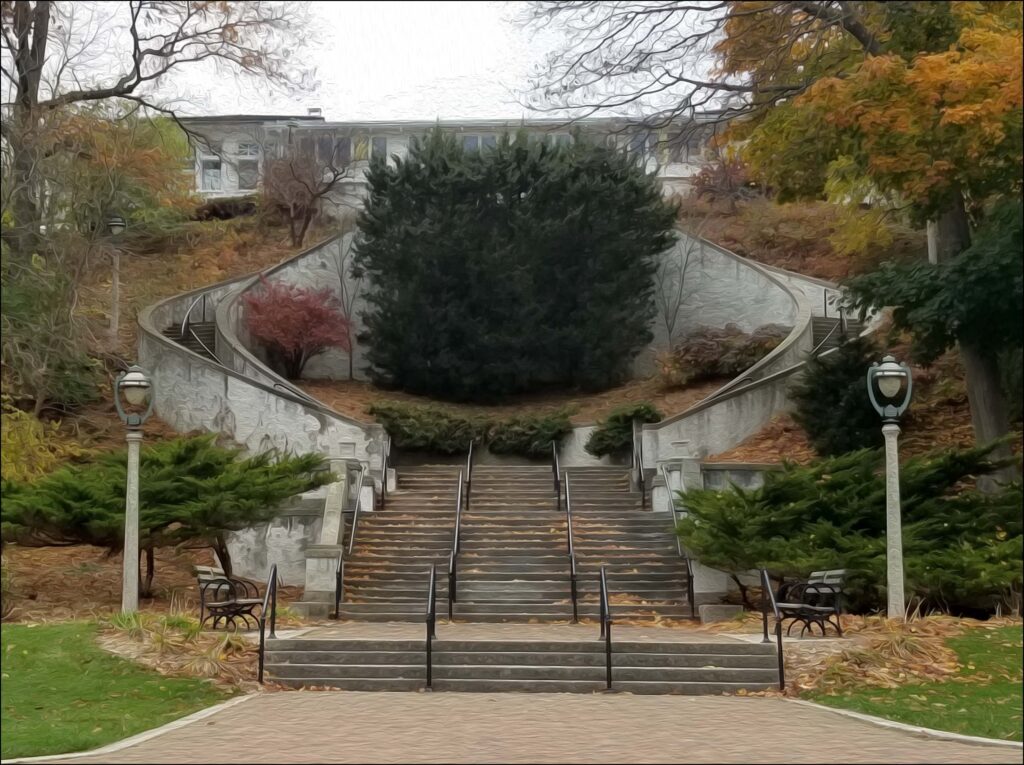
The park’s pavilion was dedicated in 1903, while the Grand Staircase was added in 1908.
Ferry and Clas designed the Lake Park Bridge, park pavilion and Grand Staircase in neoclassical styling to create a grand procession along the eastern edge of the park. The Grand Staircase descended from the back of the pavilion to the lakeshore walkway below.
To this day, the stairway leads from the back of what is now The Bartolotta’s Lake Park Bistro to the bottom of the bluff along Lincoln Memorial Drive.
The North Point Lighthouse
The lighthouse, of course, marks the most northern point of the Milwaukee Bay. The current lighthouse is in its third generation. The first North Point Lighthouse was built in 1855 of a Cream City brick with a cast iron lantern. In the late 1880s, bluff erosion endangered the structure and plans were drawn up for a replacement. In 1888, a 40-foot cast-iron lighthouse tower was built 100 more feet west from the bluff’s edge. A light keeper’s quarters was built alongside the structure.
Since 1888, the North Point Lighthouse marked to sailors the entrance to the Milwaukee River. In 1928, the keeper of North Point Lighthouse and the three keepers at Milwaukee Pierhead Lighthouse – the small red lighthouse found at the end of the Summerfest grounds – were united. They became the Four Keepers of Milwaukee Harbor Station. Until automation, all of the lights in the harbor were serviced by the resident Lighthouse keepers stationed at the North Point Light Station.
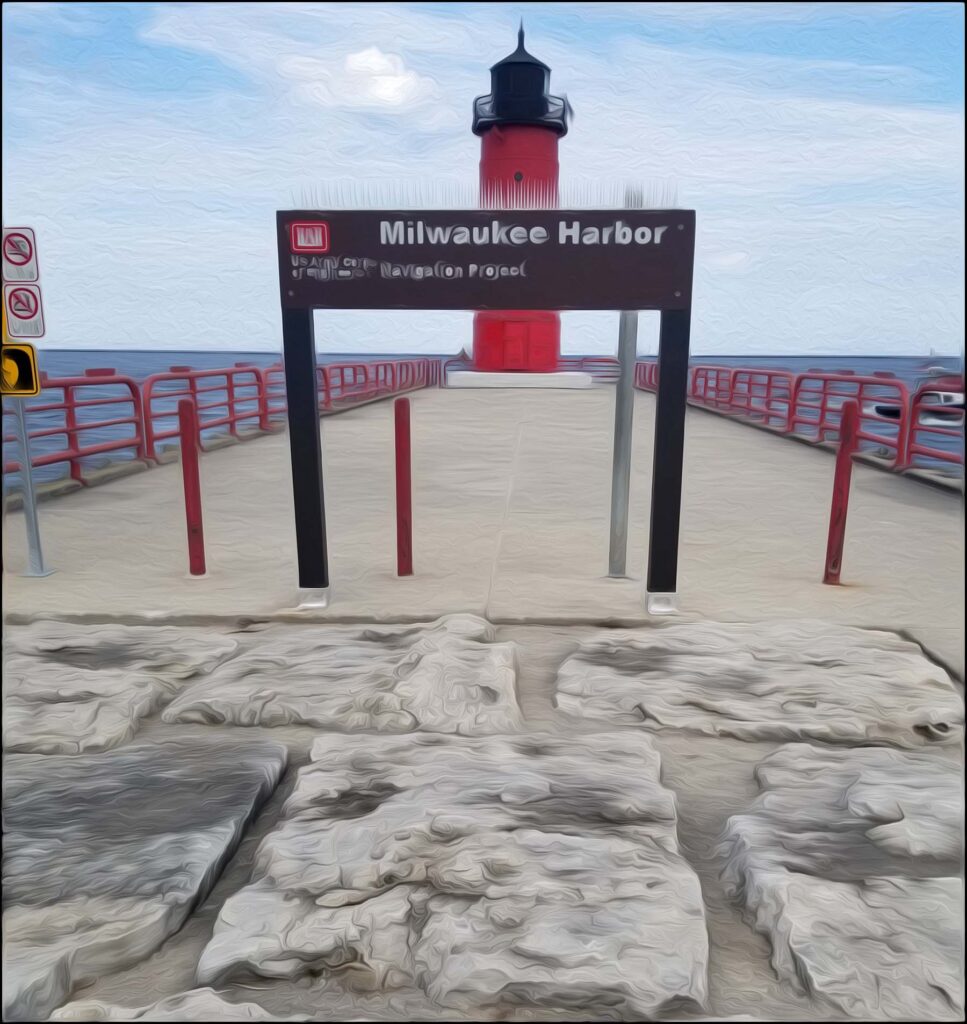
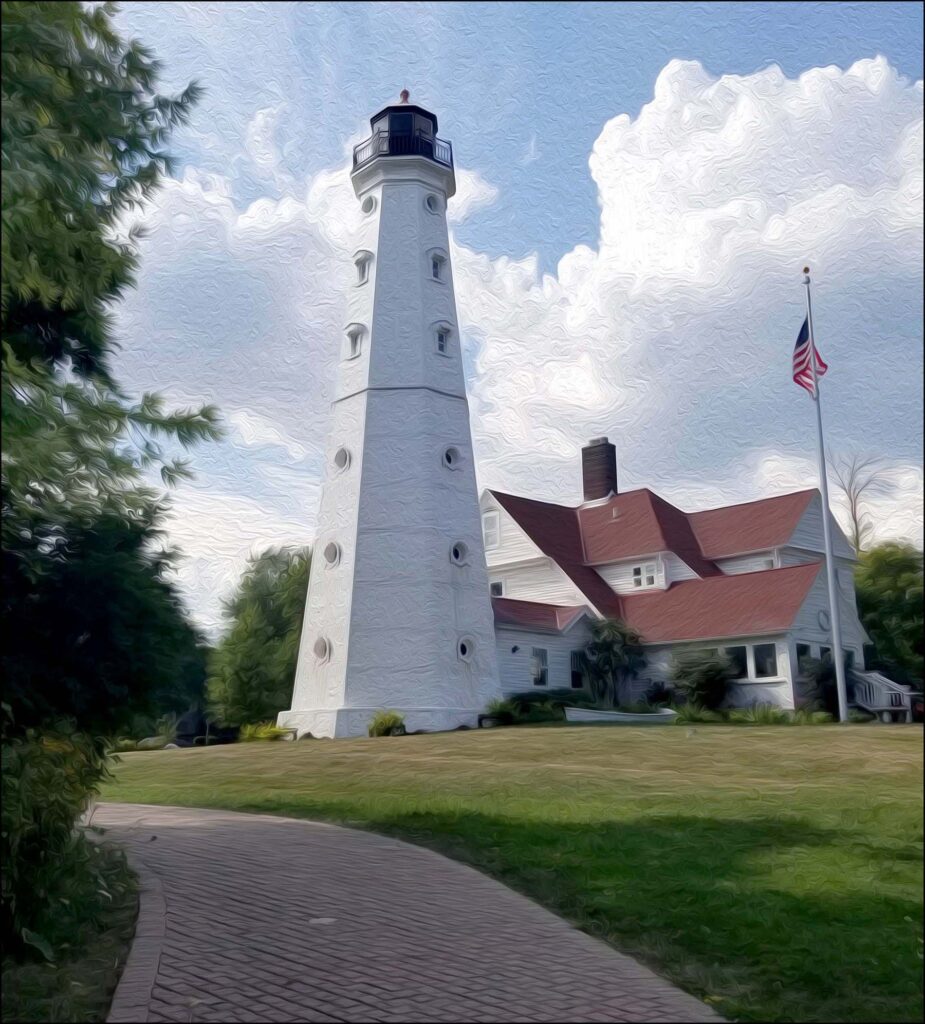
Overtime, tree growth between the lake and tower obstructed the light. In 1912, the tower was dismantled and a riveted steel addition was erected at its foundation. The original section was then placed on top, now reaching up 74 feet. The original 1855 lantern room was used again on the new tower. The first lantern burned mineral oil. The lantern was then converted to coal gas until it was electrified in 1929.
The North Point Lighthouse was added to the National Register of Historic Places in 1984. In 2003 Milwaukee County leased the lighthouse and keepers’ quarters to the North Point Lighthouse Friends. Applying a hefty grant, they began restoration of both. The repaired landmark re-opened to the public as a maritime museum in 2007. What a fun place to take students!
Milwaukee’s Riverside Park
River Park, now known as Riverside Park, was once a large ravine sloping down from Oakland Avenue to the eastern banks of the Milwaukee River. Olmstead designed his next park around this natural ravine. A carriageway was built from the top of the wooded ravine down to the riverside. From there, the road climbed back to the top of the bluff, turning north and exiting at Locust Street.
The carriageway passed under the Chicago & North Western Railroad tracks through a large tunnel made of limestone blocks. Once upon a time, the park’s wooded path was even lined with ornate light fixtures for evening travel. About three-fourths of a century later, the declining ravine park trail and its tunnel were packed with landfill. Riverside High School’s athletic fields were then built above them along the railroad tracks.
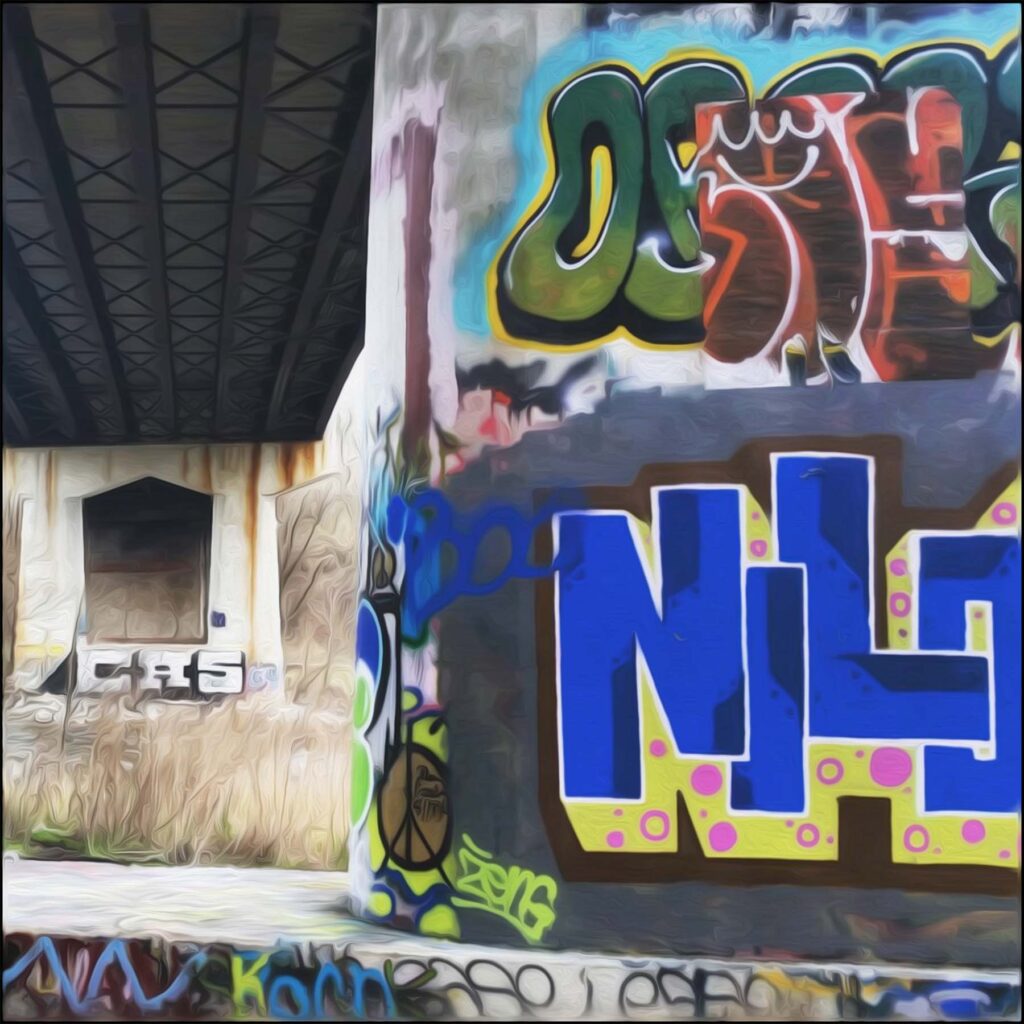
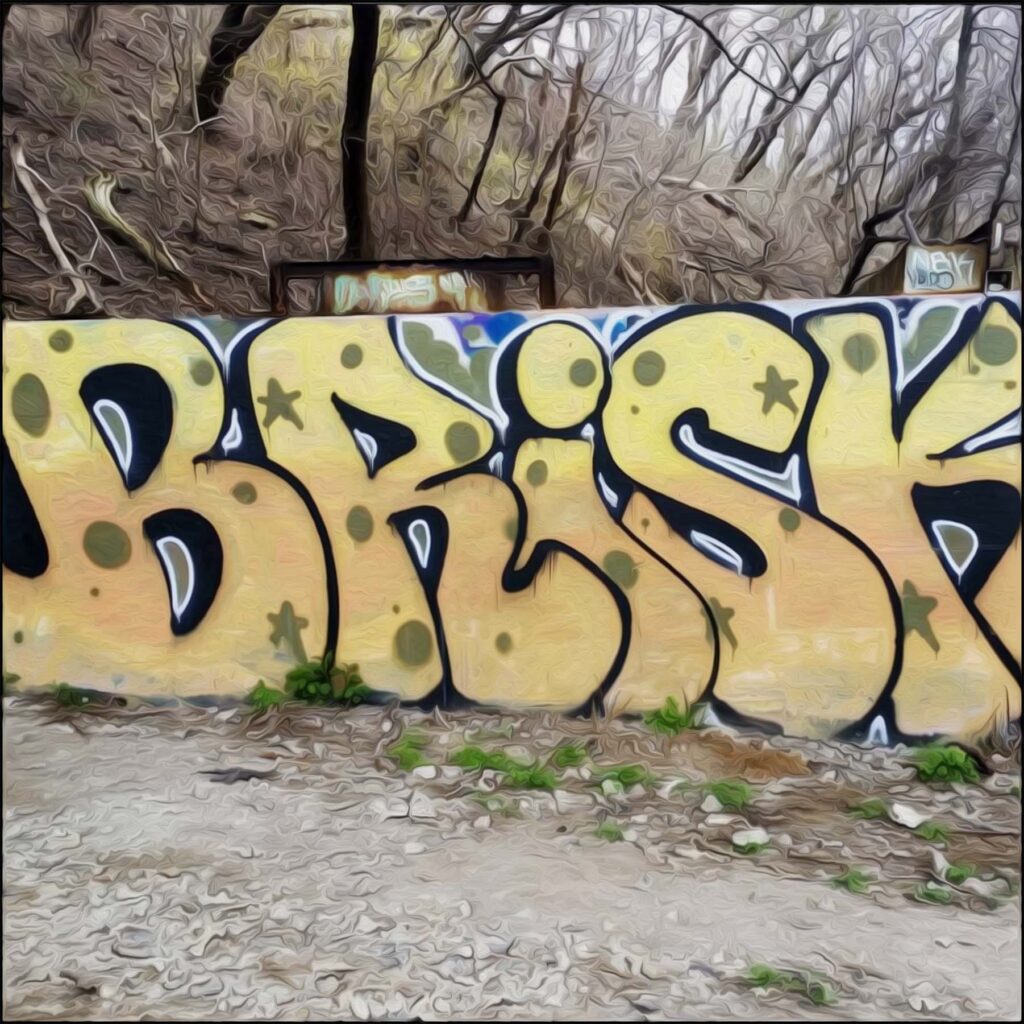
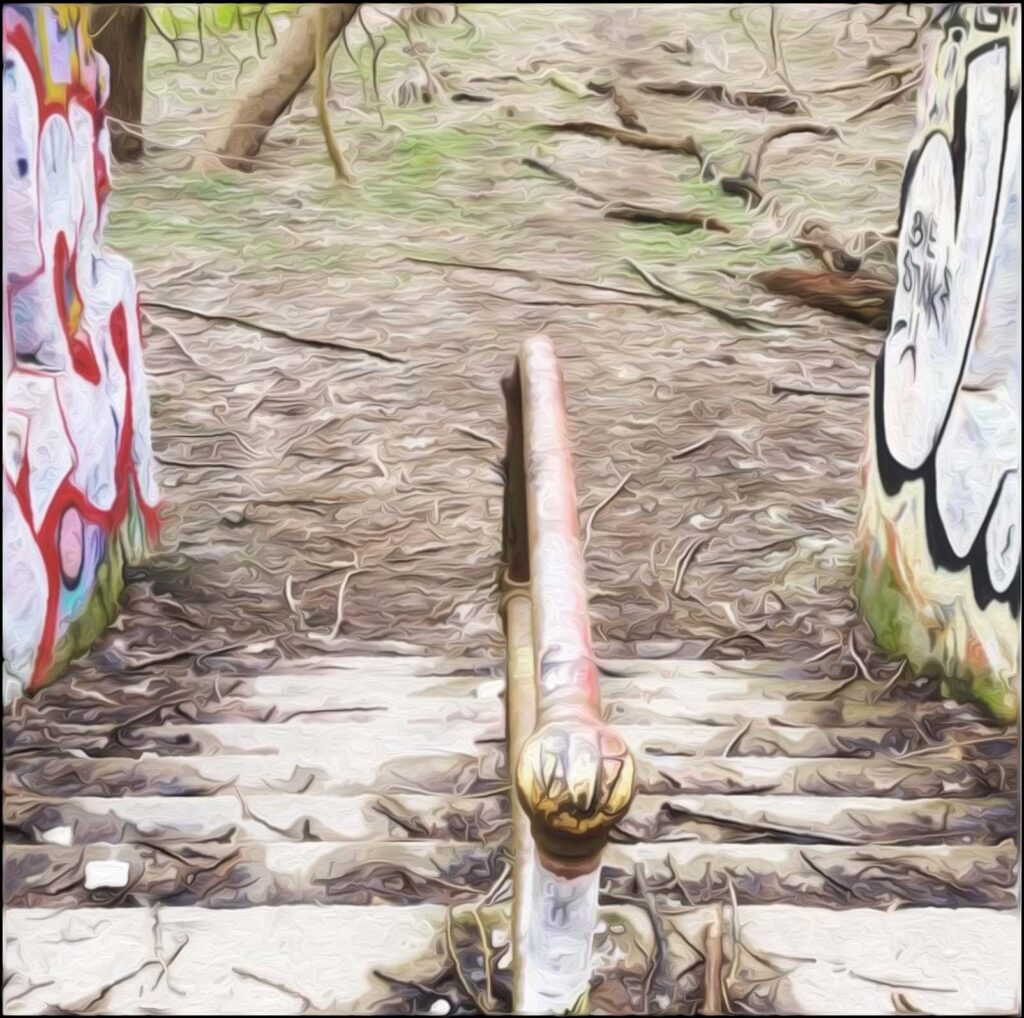
By the 1990s, as with many Milwaukee parks, Riverside Park sat badly neglected. Covered with litter and graffiti, it became a known hangout for drug dealers and other shady dealings.
In an effort to clean up the park, community volunteers began organizing park cleanups. Over time, they even began teaching classes and holding programs from trailer homes parked on the site. This effort grew into The Urban Ecology Center, now a popular nature center in the Milwaukee area.
The center opened in 2004, providing outdoor programs and nature walks to families and students living mostly in heavily urbanized environments. Riverside Park, alongside the newly paved Oak Leaf Trail (where the railroad tracks were once located) was transformed back into a magical greenspace.
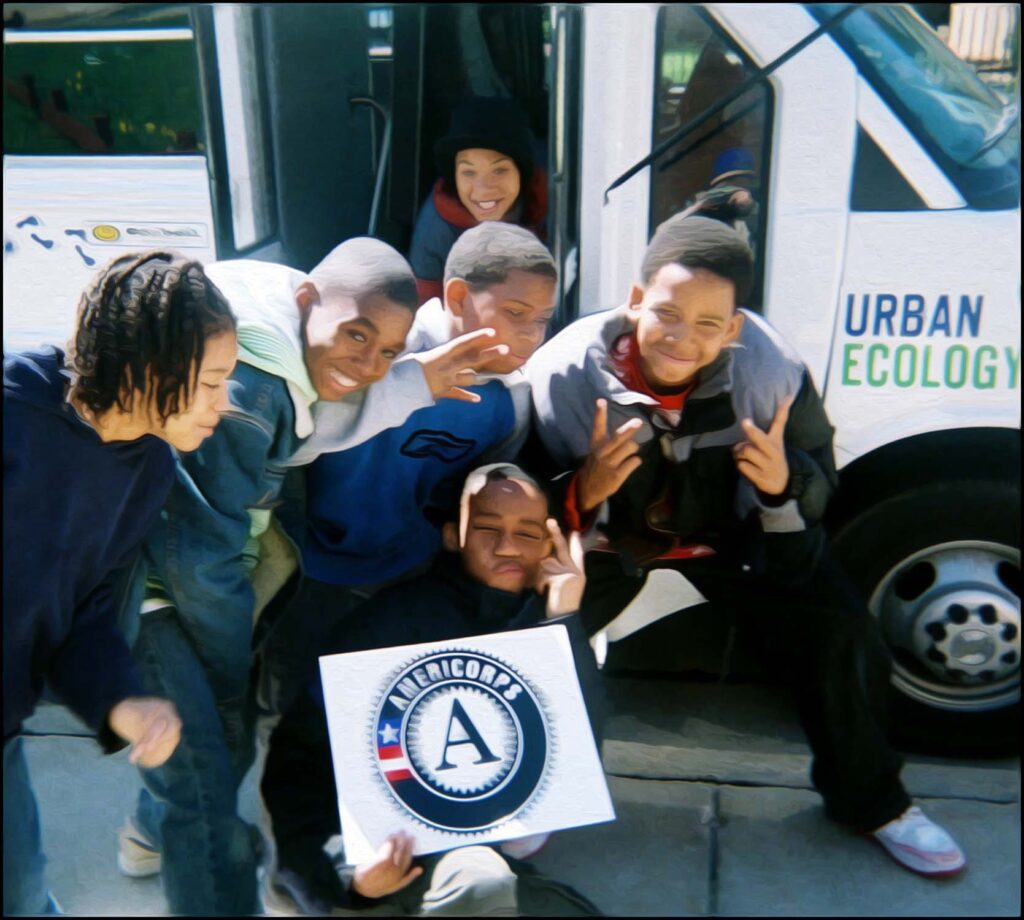
Although the stunning ravine trail has been lost to history, decaying features of the original park remain hidden beneath the graffiti.
Mitchell Park
In addition to Lake and Riverside, the three other original city parks were South (now Humboldt) Park, Coleman (now Kościuszko) Park and Mitchell Park. Added to them were West (now Washington) Park and North (now Sherman) Park in 1891.
Mitchell Park, located on Milwaukee’s Westside, was unique in its own way. Overlooking the Menomonee Valley, it was built on land once owned by the prominent Mitchell family. About 30 acres along the valley was originally developed as their private park named Mitchell’s Grove.

.
After Alexander Mitchell’s death in 1887, 24.5 of those acres were purchased by the Commissioners for their grand parks project. Five additional acres would later be donated by the Mitchell Family. The addition of Mitchell Park’s first horticultural conservatory was developed and constructed in 1898.
The glass-encased conservatory was inspired by London’s famed Crystal Palace. Just in front of the glass building was a sunken garden adorned with formal flower beds and a small pond. Another English inspiration, the garden mimicked those of regal English homes. The original Mitchell Conservatory was used from 1898 to 1955.
In 1906, the Park Commissioners would secure another 28.5 acres from the John Burnham estate for Mitchell Park. Land purchased from the Milwaukee Southern Railway Company increased the size of the park to 62 acres. Over time, the Milwaukee conservatory was replaced with a new facility designed by local architect Donald L. Grieb.
His design included three domes to open to the public in this order: The “show” dome featuring seasonal plants and special exhibitions in 1965; The tropical dome in 1966; and The arid (or desert) dome in 1967. To this day, many consider the three domed structures to be the gem of Milwaukee’s public parks system. First Lady, Claudia Alta aka “Lady Bird” Johnson dedicated the seasonal dome in September of 1965.
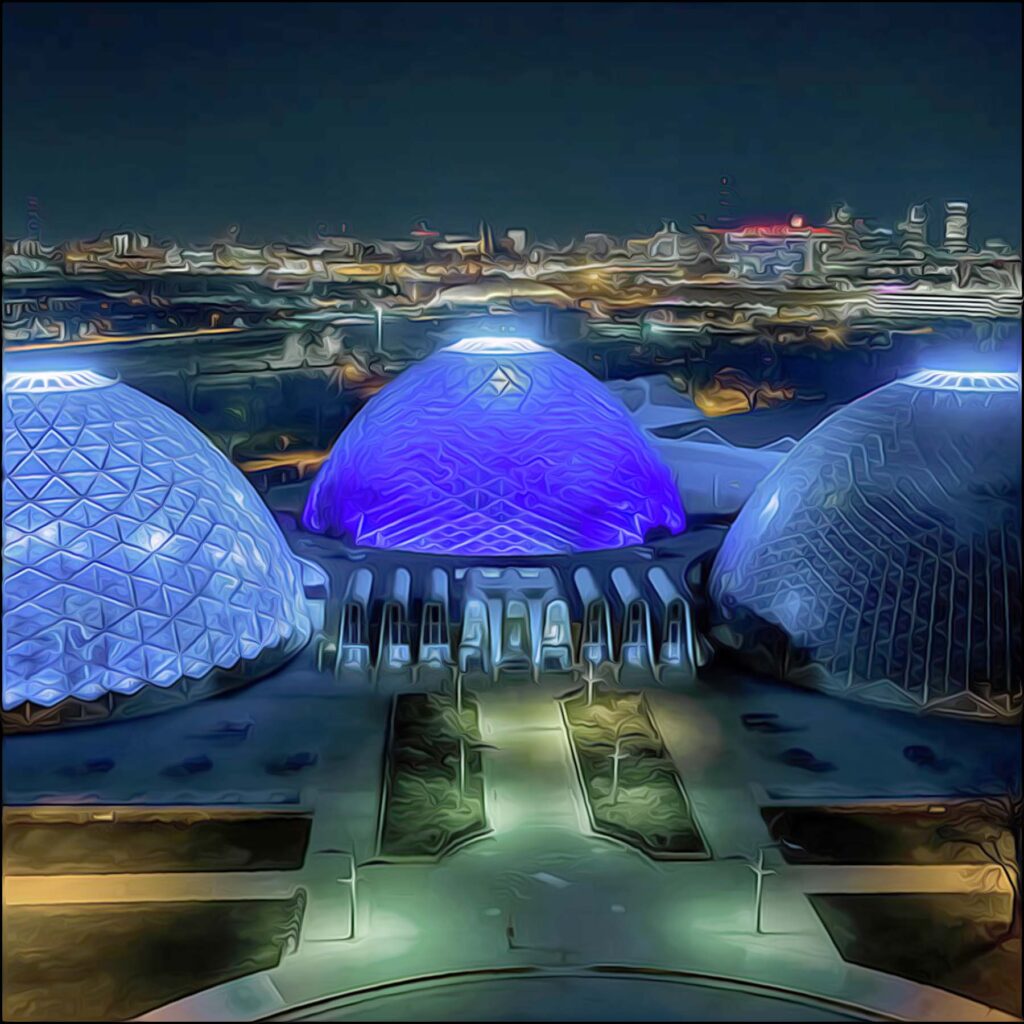
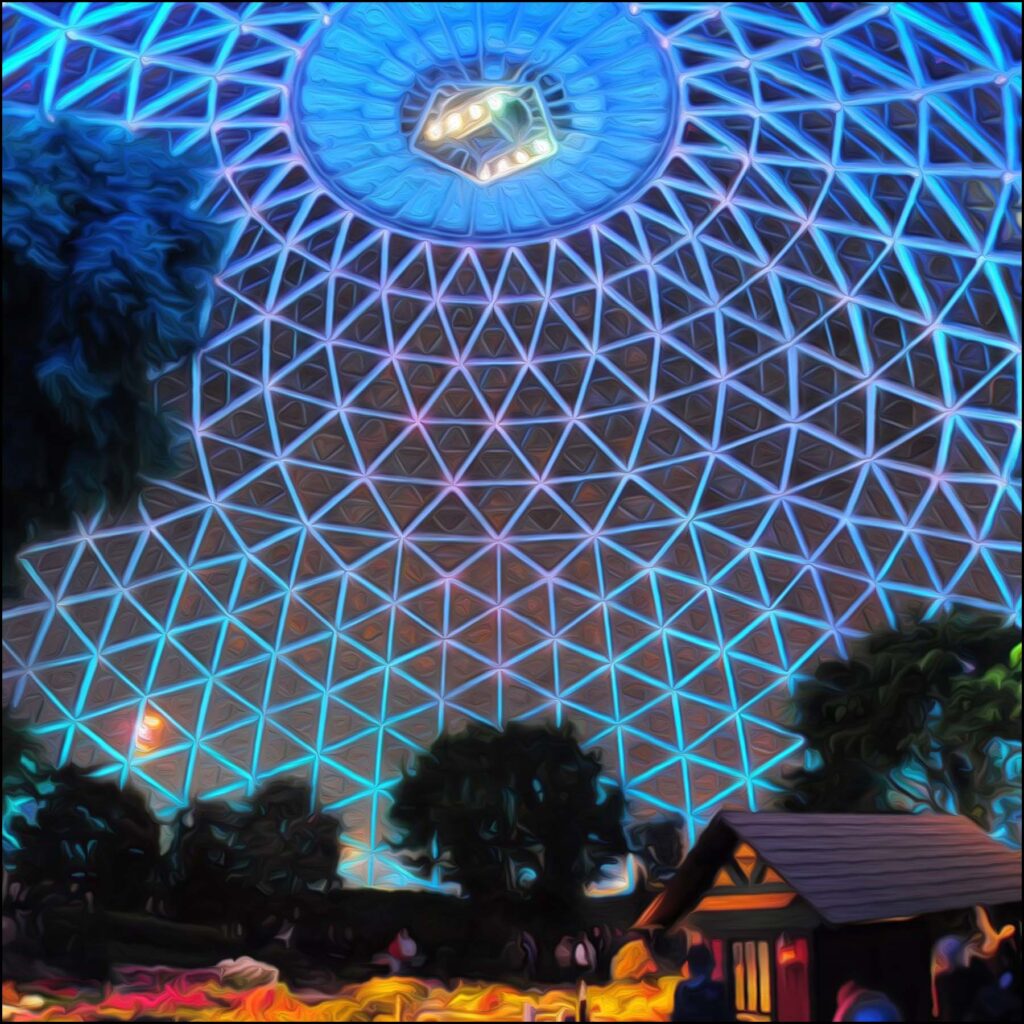
Interestingly, it was along the Menomonee valley, tall and proud upon a bluff, French fur-trader Jacques Vieau built his original trading post. Perhaps being the highest point in the city of Milwaukee, his trading spot offers quite a view of the valley and what is now the downtown city landscape.
Although Vieau’s cabin is now gone, a 1925 plaque commemorating the site of his trading post remains near Mitchell Park. Though it’s quite difficult to find and to access. The historical marker is now neatly tucked behind a children’s recreational football field.
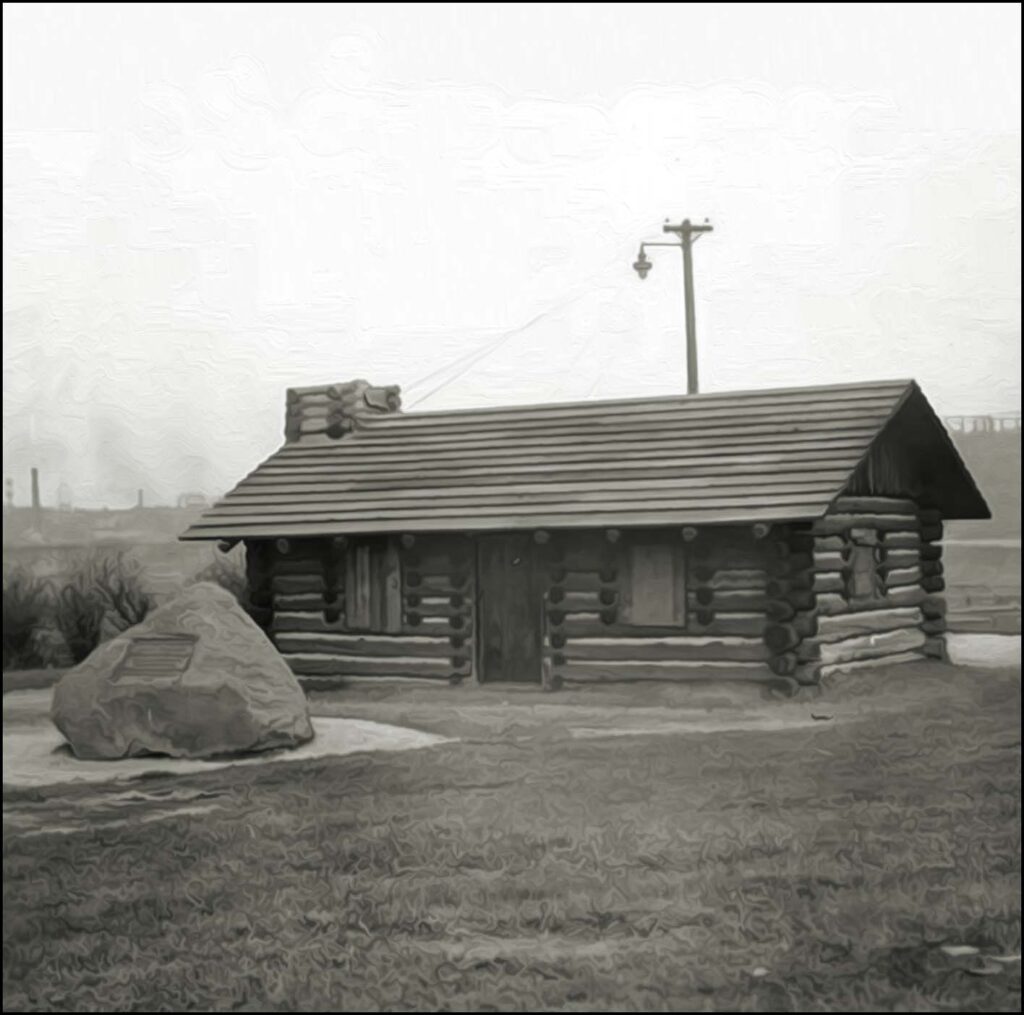
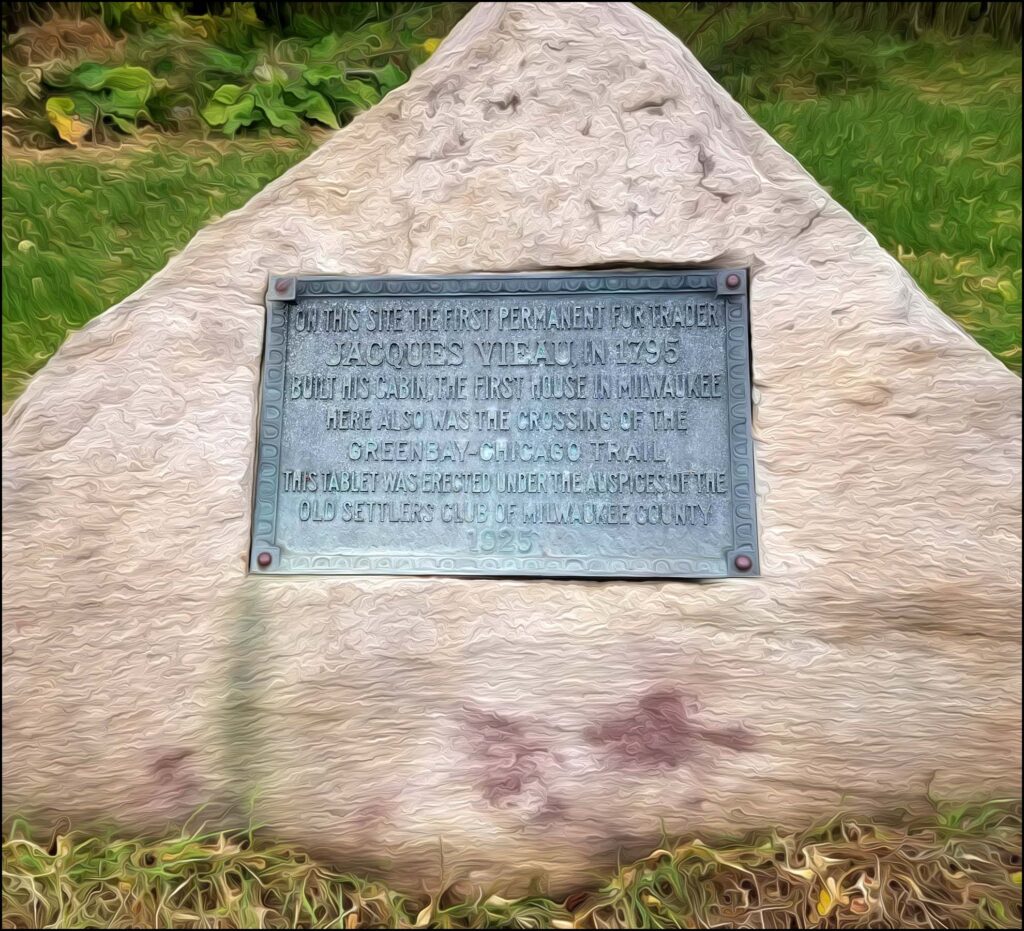
Kościuszko Park
One would be remiss if not to mention the abundance of ornate Polish churches around Milwaukee’s Southside. If there was one area they spared no expense, it would be in the building and maintaining of Polish Catholic parishes. Places of worship were the beating heart of the Polish community. Often, Poles would put second and third mortgages on their homes, in order to help finance their community churches.

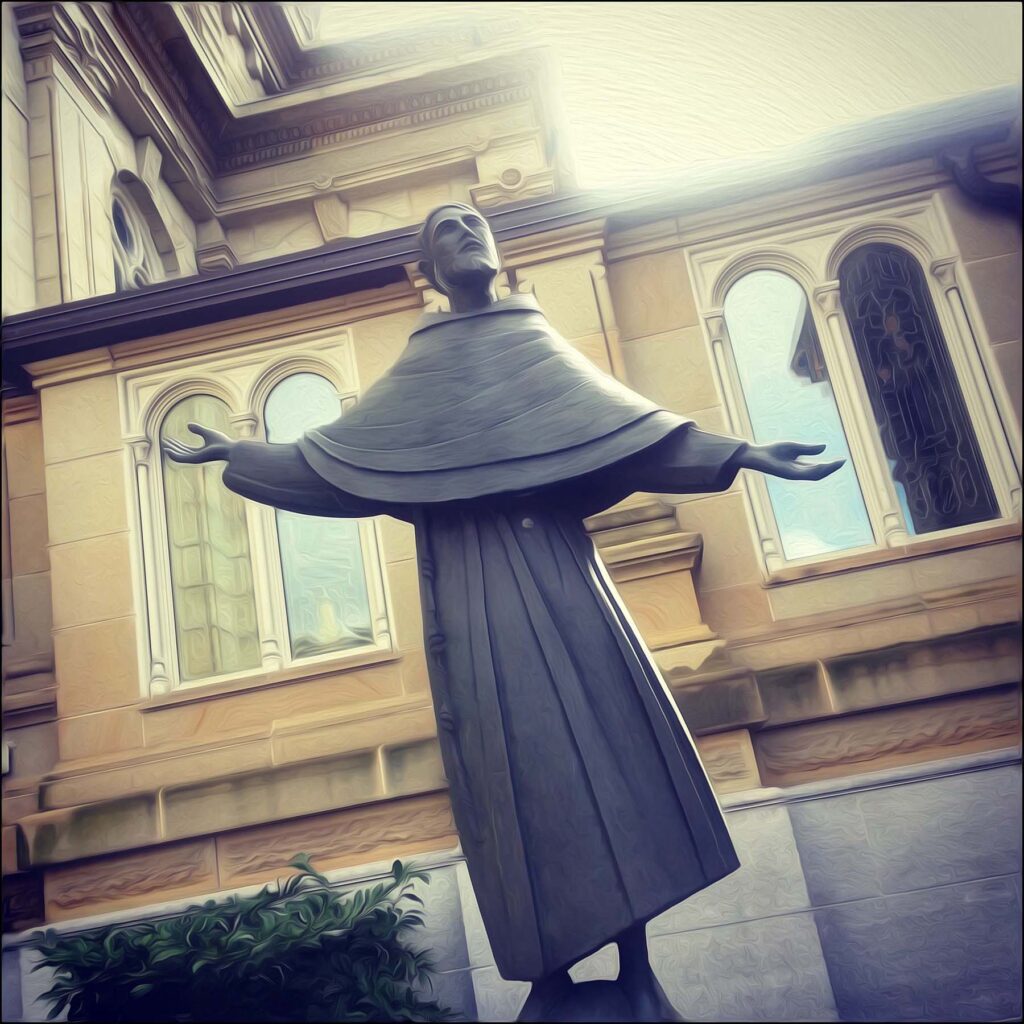
The most famous of which would be the Basilica of St. Josaphat, located in the historic Lincoln Village. St. Josaphat was born John Kuncevic about 1580 in Vladimir. This was a village of the Lithuanian Province of Volhynia, then a part of the Polish Kingdom begun under the Jagellonian Dynasty. In 1609, Josaphat was ordained a priest and began his career of preaching, spiritual direction and providing for the needy and homeless.
Inspired by St. Peter’s Basilica in Rome, the Basilica of St. Josaphat was built in the style of Italian Renaissance. Using mostly recycled building materials from Chicago to save money, construction began in 1866. The church possesses an Italian style clock tower topped in the center with an imposing copper dome. The inside is not outdone by the outside. The European-style basilica possesses stunning interior paintwork.
To this day, it stands as the biggest church in Milwaukee County. St. Josaphat remains as a testament to the faith of the Polish immigrants who created it.
Just down the street from the Basilica is Kościuszko Park. The City of Milwaukee had purchased the land from J.C. Coleman in 1890, originally known as Coleman Park, it covers 33.5 acres on the Southside of Milwaukee’s emerald necklace. Renamed Lincoln Avenue Park in the mid-1890s, it was given its current name in 1900. Kosy, as known by locals, was once home of the Kosciuszko Reds. The Reds were a franchise of the Polish-American Semiprofessional Baseball League until 1919.
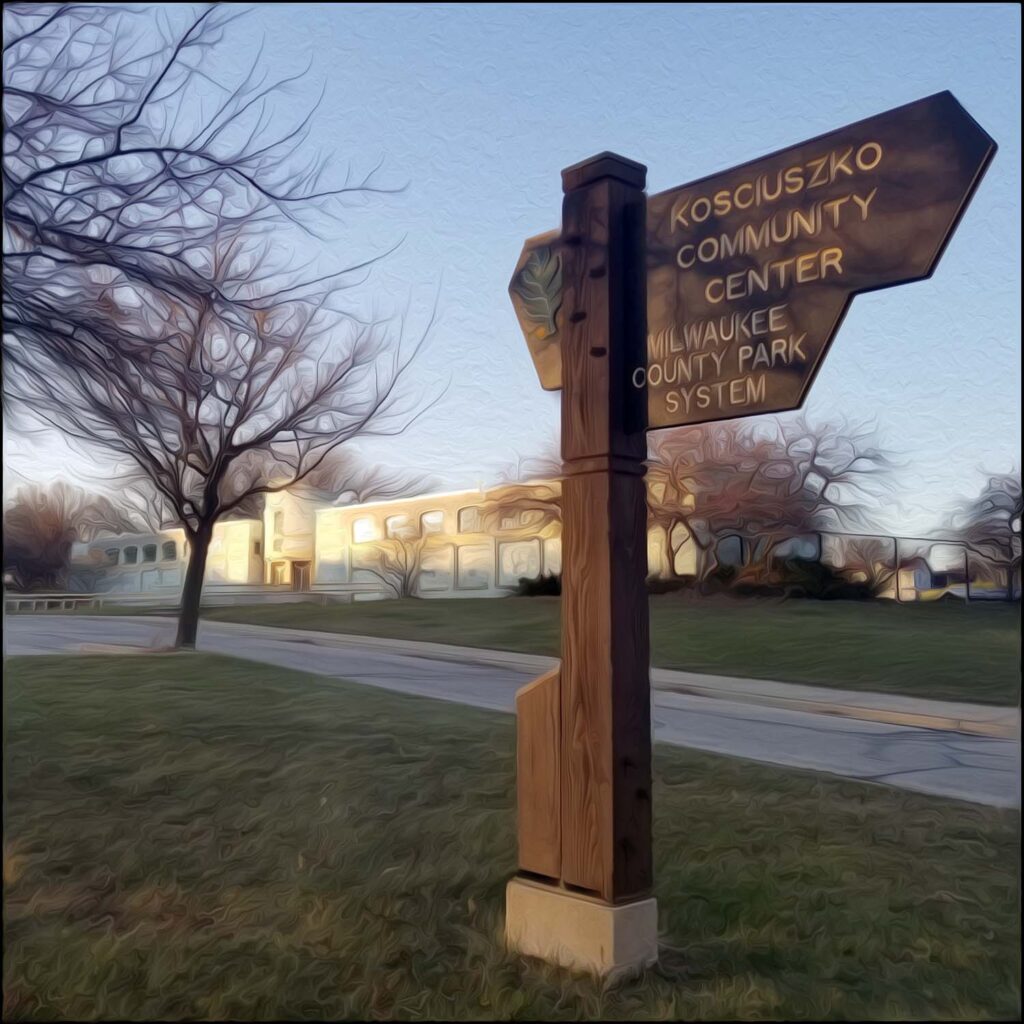
The park memorializes Polish General Thaddeus Andrzej Bonawentura Kościuszko (1746-1817). General Kościuszko fought on the American side of the Revolutionary War and in the Polish-Lithuanian Commonwealth’s struggles against Russia and the Kingdom of Prussia. As Supreme Commander of the Polish National Armed Forces, he led the 1794 Kościuszko Uprising.
The defeat of the Kościuszko Uprising led to Poland’s Third Partition in 1795, ending the Commonwealth. In 1796, following the death of Tsaritsa Catherine II, Kościuszko was pardoned by her successor, Tsar Paul I.
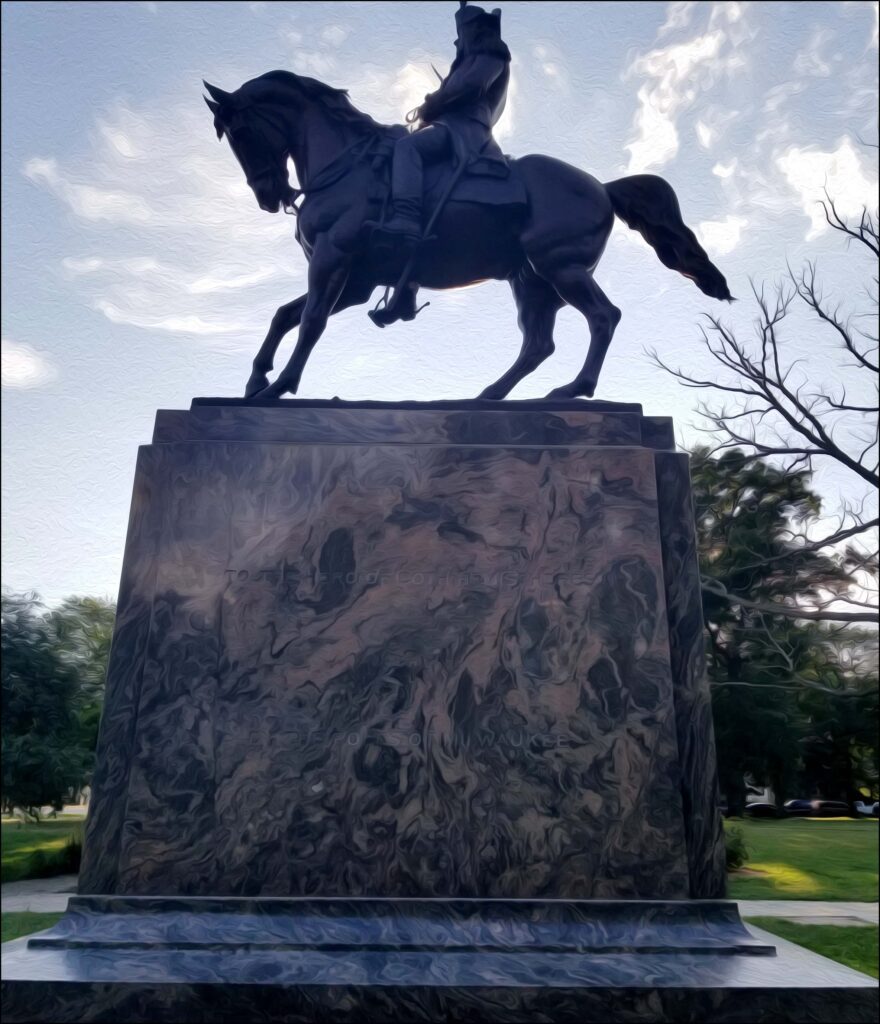
General Kościuszko then emigrated to the United States. He was a close friend of Thomas Jefferson, with whom he shared ideals of human rights.
Kościuszko Park is home to a bronze statue known as the Kościuszko Monument. Members of Milwaukee’s Polish community pitched together and raised money for this impressive memorial. The Milwaukee Polonia commissioned Italian sculptor Gaetano Trentanove to design and construct the public art piece in 1903.
Attended by 60,000 people, the monument was formally dedicated on June 18, 1905. Originally installed on the north side, the newly restored statue was moved to its current location on the south side of the park in 1951.
In addition to the monument, Kosy features a public pool with waterslide, tennis courts, a park pavilion next to a 3-acre fishing pond and a community center.
Humboldt Park
The last of the five original Milwaukee County Parks was, like Kościuszko Park, also on the Southside of Milwaukee’s emerald necklace. Originally named South Park, Humboldt Park covers 73 acres of the Bay View neighborhood. Opened in 1891, the park was named for the German polymath, geographer, naturalist and explorer Friedrich Wilhelm Heinrich Alexander von Humboldt (1769 – 1859).
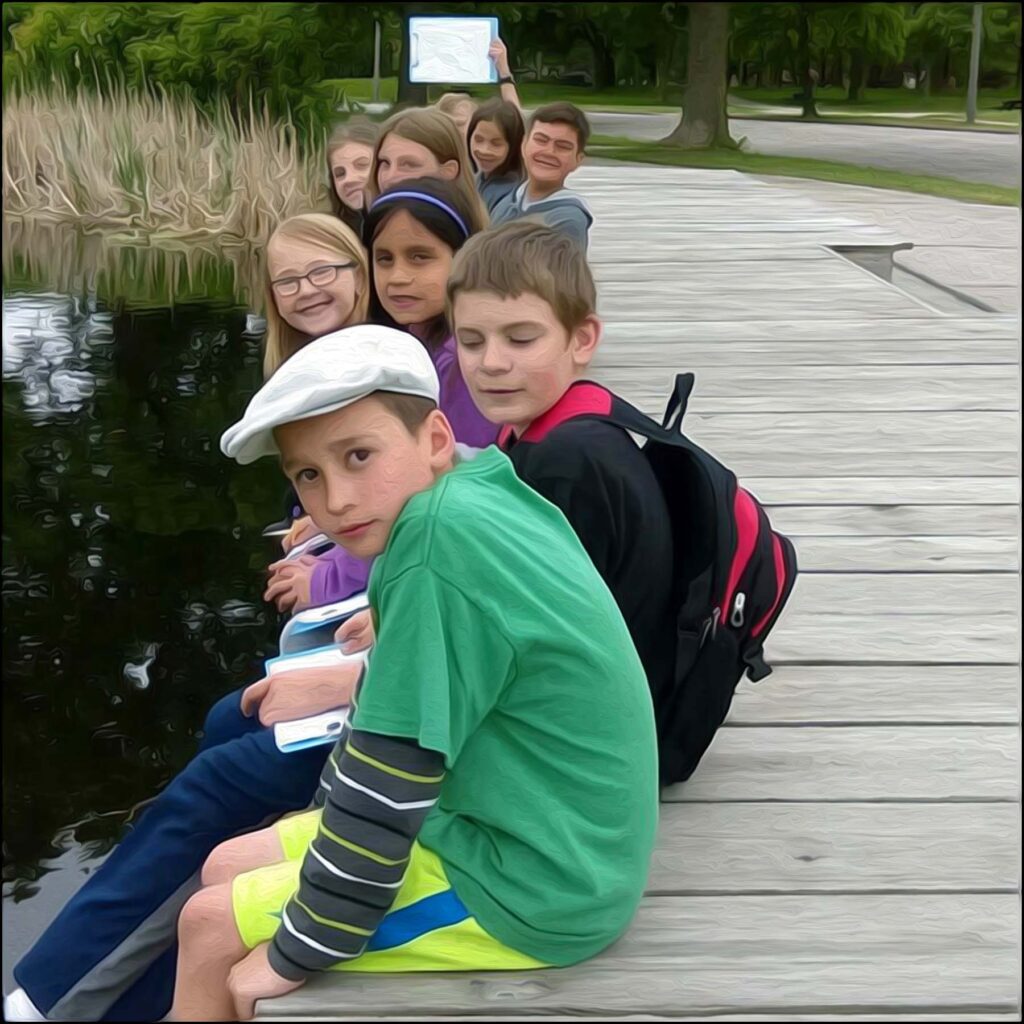
Friedrich is best known for his quantitative work on botanical geography, laying the foundation for the field of biogeography. Between 1799 and 1804, Humboldt travelled extensively in the Americas, exploring and describing them. Only, this time and for the first time, it was done from a modern Western scientific point of view.
Before this, the park was also called Howell Avenue Park for the bordering street on its west side. The park was built over a rippling tract of land two-thirds covered by woods. Early developments included the construction of a lake and its fetching boathouse designed by architect Howland Russell.
A memorial to Bay View’s 1,200 World War I veterans constructed and dedicated in 1921. The monument was made by the American Granite Company.
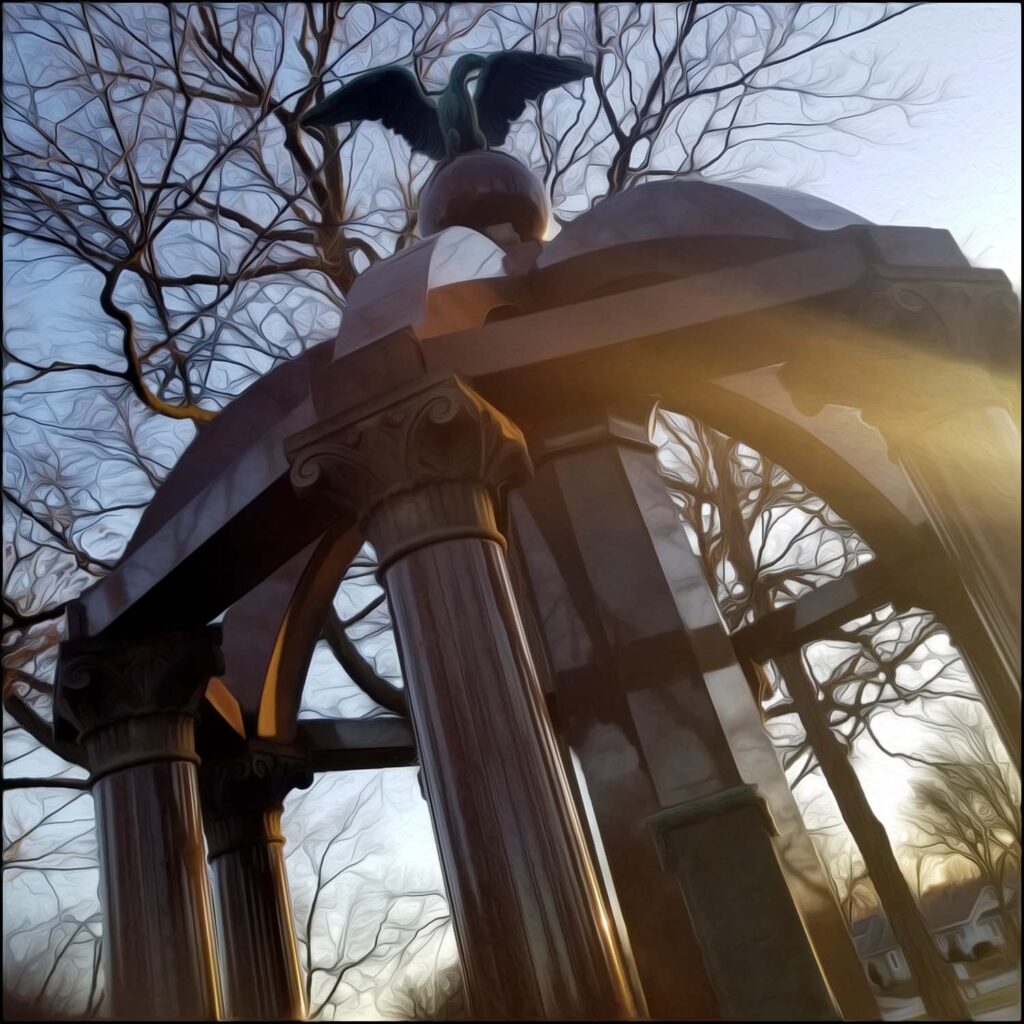

Other highlights of the park included a lagoon, a creek and rowboats available for rent. Another popular early feature was the lily pond near Oklahoma Avenue. Today, the park also houses tennis courts, a tot lot and splash pad, along with an outdoor music stage next to a park pavilion housing a beer and wine garden.
The Bay View Neighborhood Association provides Chill on the Hill to park attendees every summer Tuesday. It is a free, weekly concert event with live local music and food trucks. “Are you going to Chill Tuesday?” has become a popular question asked among Bay Viewers.
Milwaukee’s Emerald Necklace
Milwaukee’s Park system truly blossomed under the influence of a man named Charles Whitnall. Whitnall was a key player in the creation of the County Park Commission. In 1907, he was also one of seven men appointed to it. Becoming Milwaukee’s first socialist city treasurer in 1910, he shared a similar vision with Milwaukee’s Sewer Socialists. Whitnall intermixed his political desires to aid Milwaukee’s urban poor while protecting undeveloped greenspace. Where unspoiled rivers, hills and woodlands could be found encircling the city, he saw great possibility. The result was a wide-ranging municipal park system.
Master plans were drawn up in 1923. Once the New Deal was launched, the park commission was able to secure federal relief funds. They quickly put Whitnall’s long-term plans for county park development into action.
Between 1929-1930, the County purchased Hales Corners farmland that was converted into Whitnall Park in 1932. The Park was chosen for the location of Milwaukee’s memorable botanical gardens, which have served as the test site for America Rose Selections since 1958.
Supported by stone pillars, its climbing roses are a beautiful site to see. Koi and goldfish pools surround the gravel walking paths set within the grounds. Named after its chief architect Alfred Boerner, the gardens are a product of Depression-era labor and have become one of the highlights of Milwaukee County’s nationally-recognized park system.
Today, Milwaukee’s public park system remains largely intact, as a result of Whitnall’s 1923 masterplan. Charles Whitnall’s plan proved to be decades ahead of its time. Like so many other high profile Milwaukeeans, the “father of Milwaukee parks system” was buried in the Forest Home Cemetery after his death in 1949.
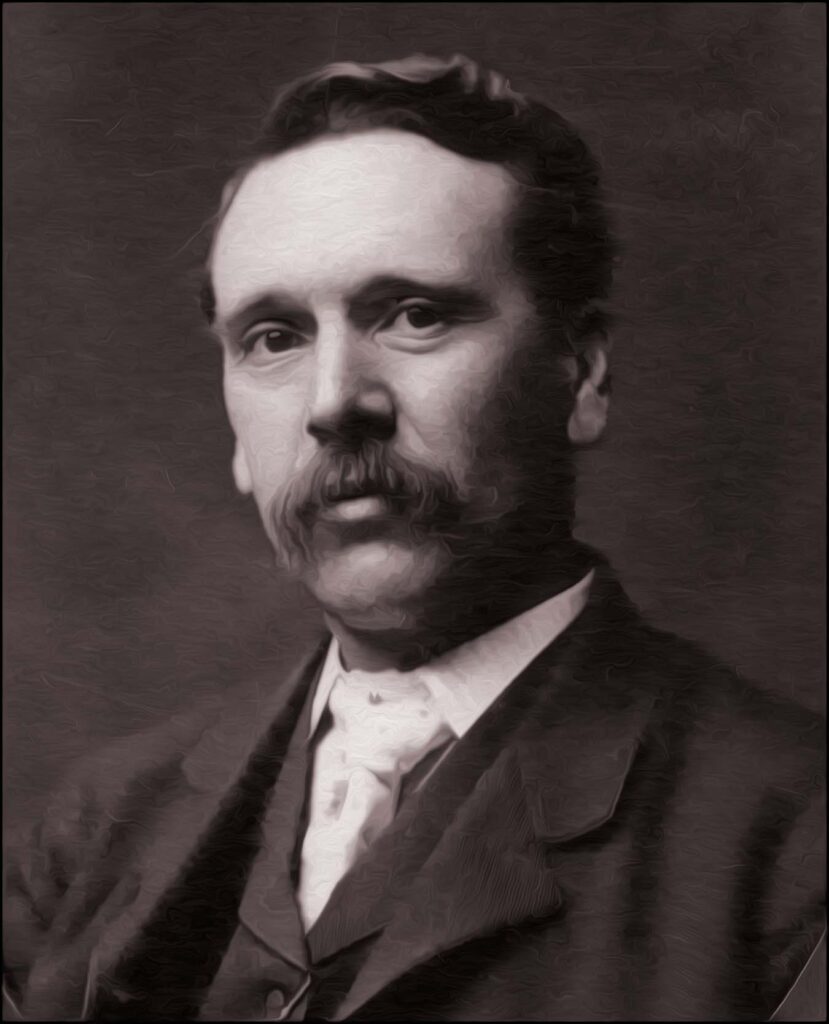
The city’s long tradition of preserving land for public use has accumulated into nearly 15,000 acres of greenspace and 169 parks, 140 miles of trails, 15 golf courses and hundreds of playgrounds, picnic sites and athletic fields. In addition to all this, European Biergartens have made a Milwaukee comeback In recent decades. The County offers five permanent and two Traveling Beer Gardens. Sadly, they’ve now become the park system’s primary funding source. So, please visit them often and drink lots of Milwaukee’s famous beer!
Here I’ve only highlighted five of our original city parks. There’s so much out there just waiting to be learned. Inspiring a natural sense of wonder and curiosity will empower a child’s lifelong love of learning. Outdoor learning adds a dimension of enrichment that can’t be taught within the walls of the classroom.
The best part? A walk in any park designed for the emerald necklace is free. The possibilities are endless!
Do you have more questions about the Emerald Necklace or Outdoor Learning? Do you have a suggestion for another blog topic? Please send me an email with your ideas or experiences at grumble.services@gmail.com.
If you find this article helpful, please share it. Please join us, if you have yet to do so. Subscribe below and receive articles like this one in your email box weekly. Thank you!
Read More: Outdoor Learning Involves Children in Our World
All Rights Reserved • © 2024 Grumble Services LLC • grumbleservices.com
References and Read More:
Muench Albano, Laurie (2007). Milwaukee County Parks (WI) (Images of America). Arcadia Publishing, Charleston SC.
Why is walking so good for the brain? Blame it on the “spontaneous fluctuations”
By Thomas Nail (August, 2021)

